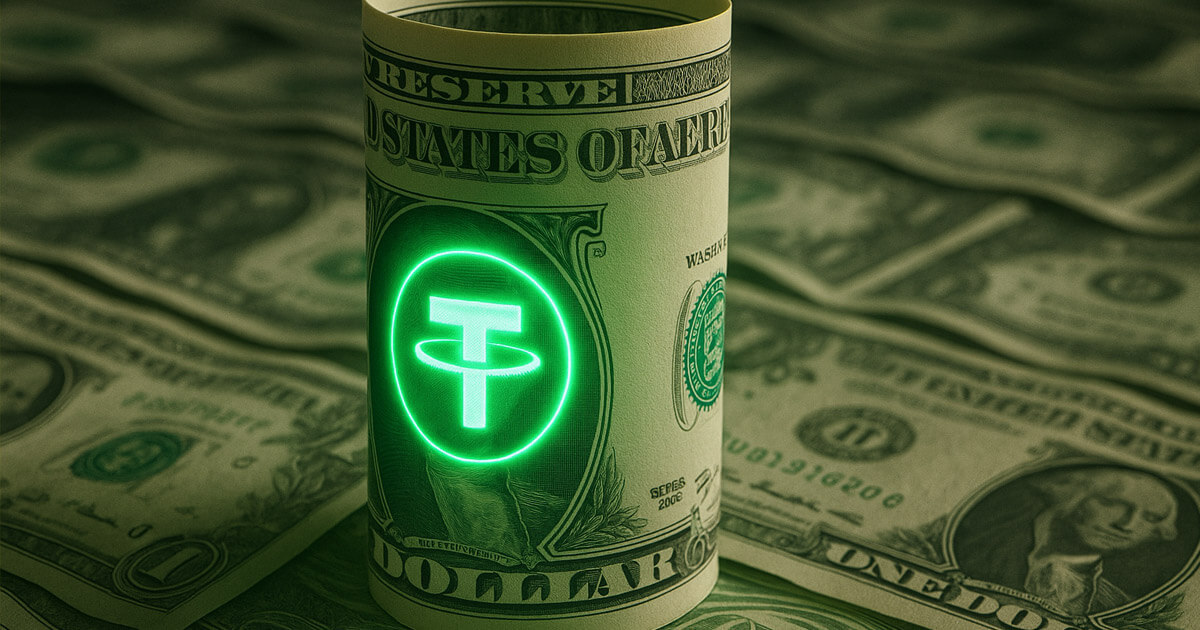
Tron Tightens Control Over USDT, Securing Almost 50% of Its $150 Billion Supply
Tether’s market capitalization has recently surged to over $150.66 billion, achieving another milestone and emphasizing its supremacy over its competitors combined.
According to reports, USDT has grown by about $830 million in the last week, with an impressive increase of more than $5.5 billion since mid-April. While the total figure is significant, the critical aspect is the distribution of tokens: nearly half are now held on Tron, with Ethereum holding a slightly smaller portion, while other networks such as BNB Chain, Solana, and Avalanche are left with only minor amounts.
Tron’s dominance over USDT has reached unprecedented levels. Recent data indicates that $73.7 billion of USDT is on the Tron network, making up 46.8% of the total supply, marking a 2.47% rise in the past week. The network’s low transaction fees, straightforward account setup, and extensive exchange support have made Tron a central hub for over-the-counter settlements and remittances in emerging markets, where minor costs outweigh the advantages of smart-contract capabilities.
Over the past week, Tron’s entire stablecoin ecosystem, which includes USDC, Dai, and other smaller tokens, increased by $1.79 billion, bringing the total to $73.74 billion. This trend highlights the preference for the most cost-effective options available.
Ethereum continues to hold $66.22 billion in USDT, accounting for 42.1% of its total supply. However, the chain has experienced a net outflow of $1.38 billion across all stablecoins in the last three weeks, with $746.5 million leaving in the past week alone. Although high gas fees above two gwei usually do not deter advanced DeFi users, they pose challenges for retail platforms and international operations that operate on narrow profit margins.
Despite these challenges, Ethereum’s ecosystem still provides the deepest liquidity pools, the most vibrant derivatives market, and essential connections to tokenized real-world assets. This enticing setup encourages USDT holders to remain on the network, even with cheaper options available.
The distribution between the two chains illustrates a significant difference in issuer concentration. On Tron, USDT constitutes 99.25% of all stablecoins, meaning that nearly every unit of currency on the network relies on Tether’s banking ties and risk management. In contrast, Ethereum offers greater diversity, with USDT making up 51.23% of its total stablecoin pool of $123.74 billion. Other tokens like USDC, Dai, and various newcomers share the remaining balance, providing a buffer for Ethereum users should any one issuer face difficulties, which explains why advanced DeFi strategies maintain a sizable presence on the network despite increased fees.
Circle’s USDC remains the second-largest stablecoin, sitting at $60.79 billion. The gap between Tether and USDC has widened to nearly $90 billion from $80 billion just a month ago, as Tether continues to mint at a faster rate while USDC’s growth has plateaued. USDC’s issuance has decreased by 1.58% weekly, with only a modest monthly growth of 1.23%. Upcoming regulations in Europe could give Circle a compliance advantage, but current data suggests that regulatory clarity has not yet swayed traders to shift their preferences.
The performance of smaller stablecoins presents a mixed landscape. DAI experienced an 8.97% weekly increase and a 12.07% monthly rise, reaching $4.48 billion following adjustments in its Savings Rate that attracted capital seeking a substantial on-chain yield at one point. Ethena’s synthetic USDe saw a slight ascent of 1.08% over the week but remains 5.19% lower than its value in April at $4.65 billion, indicating reduced demand for hedging as funding spreads in perpetual futures narrow. BlackRock’s pilot BUIDL, backed by tokenized US Treasury assets, rose by 19.30% over the month to reach $2.89 billion; while still small relative to Tether, this growth is noteworthy for its rapid pace.
BNB Chain stands out as the only secondary network making significant strides with USDT, capturing a 5.79% daily increase of approximately $300 million, increasing its total to $5.48 billion—the largest single-day rise since February. In contrast, Solana’s total remained stable at $2.39 billion, while Avalanche experienced a 2.74% loss in its supply of $1.87 billion despite a double-digit increase over the month. Overall, networks outside of Tron and Ethereum collectively hold just over $10 billion of Tether, which is less than what was minted in April alone, underscoring how concentrated liquidity is within the two primary chains.
The preference for Tron is largely driven by basic economics. For a standard transfer costing half a cent, a desk transferring $100 million only incurs a $50 fee on Tron compared to approximately $30,000 on Ethereum when operating at 50 gwei. Bridges and wrappers enable almost instant transfers to exchanges that feature TRC-20 USDT pairs, particularly Binance, OKX, and HTX, minimizing the necessity for expensive and often slow layer one transactions. While Ethereum cannot compete with that cost structure, its established role in DeFi, institutional custody, and high-value NFTs keeps significant funds anchored even when idle capital seeks cheaper alternatives.
However, concentration poses known risks. If regulators focus on Tron, restrict Tether’s access to it, or limit US banks from servicing exchanges dependent on TRC-20 liquidity, a substantial portion of USDT could become more difficult to redeem or transfer. This potential risk has led some treasurers to adopt a barbell strategy, keeping operational capital on Tron while reserving strategic funds on Ethereum or even in staked T-Bills like BUIDL. This strategy mirrors traditional treasury structures, where checking accounts manage daily operations and custody accounts handle long-term allocations.
An additional consideration is the rate of issuance. Tether added nearly $19 billion in the first four months of 2025, surpassing the total for all of 2024 before May even began. If this momentum continues, USDT could end the year above $200 billion, roughly equivalent to 20% of Bitcoin’s current market cap. Such a volume will compel exchanges, prime brokers, and insurers to re-evaluate counterparty risk exposure, enhance collateral policies, and prepare for potential scenarios involving chain disruptions or banking issues.
Currently, the data indicates that liquidity is gravitating toward the most economical options, with traders willing to accept the risks associated with a single issuer, as alternative choices involve slower processing times or higher fees. USDC offers a path focused on compliance, DAI provides a collateral-backed alternative, and newer tokens are exploring yield opportunities or backing by real-world assets; yet none are capturing market share at a rate that diminishes Tether’s lead. The milestone of $150 billion is not merely an impressive figure; it signifies a market context where two chains and one issuer drive the pace of cryptocurrency transactions.



















Post Comment